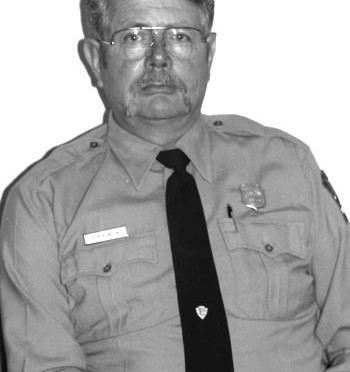To what extent were you involved in the lake research project? I know that began slightly before you came. . .
Well, yes, but nothing serious (37). There was no question it was gonna die when I got there. It wasn’t gonna go anywhere. We were very fortunate there. There were other people that have taken some more credit, perhaps, than they deserved about that early lake program. But the mover and the shaker there was Jarvis. No doubt about it. Jon worked hard at putting together the elements of the first good program. I spent a lot time with Jon because Jon knew that if he didn’t have the superintendent on board on that from day one, it wasn’t gonna happen, particularly when [he] tends to be as outrageously outspoken as I am. So I was up to it clear to my neck, as it were.
Was Gary Larson involved from the beginning?
Gary was an absolute delight, and again, there were other people within the framework of the Pacific Northwest Region that didn’t realize what an absolute gem we had with Gary Larson. A lot of superintendents, including me, look at some of the CPSU types as not an asset at all. But, goodness sakes, Gary Larson was a gem, and not everybody realized that within the framework of the whole region. I did, because I had pretty good contacts where Gary came from. So as a result, we knew that we had a real gem from day one there. We were standing there clamoring very early in Gary Larson’s tenure.
Did the lake program come about in similar fashion as history, or were there some different circumstances?
We had a really good issue and an excellent resource with which to work. We had the players, in place, that were going to support it. We had good people within the park. We had Gary Larson. We had Jim Larson in the regional office (38). Not everybody really realized what a godsend Gary was, Where other parks of more stature than Crater Lake might have started to grab a hold of a lot of Gary’s time, they didn’t. So we were in a position [where] we had the project, we had the resources, we had the people, and the money is easy.
Were you involved with the day-to-day on that geothermal issue?
Absolutely. There was nothing [that] ever happened on the geothermal issue that I wasn’t aware of. If there were, and I found out later, I’d have had somebody scalped. I had to know, practically minute-by-minute, object-by-object, that whole doggone program. That had to happen. And that was such a tremendous political issue that I had to know blow-by-blow.
Our problem there was [Charles] Odegaard’s total cowardice (39). He is such a political animal. When that little tutti from the Reagan Administration – he had several tuttis in that program – would call, Odegaard would absolutely go into epileptic shock. Since he doesn’t have a park background, he didn’t know that he could go to the wall with those bastards and win (40). From his standpoint, if one of those lackeys – and that’s what they were, Reagan lackeys – called him up, he didn’t know that he could tell them to go to hell. So as a result we were constantly trying to respond to Odegaard’s worries about Admiral Murphy. Well, who the hell is Admiral Murphy? He’s nobody. So he’s a lobbyist for Cal Energy (41). This guy isn’t anything. You can beat him to death with one or two phone calls. But Odegaard worried about that constantly. He fancied himself the great politician. And don’t get me wrong. I have a lot of good things to say about Chuck. But he is a political animal and we needed more guts. We would’ve won that, no matter what. . . We never did have to use the real big guns. I had people that I could have called on back from the days of the Alton Coal controversy that I won at Bryce Canyon. I had people that I could have called on that we could have hammered [Cal Energy] if we’d have had to. We never did.


